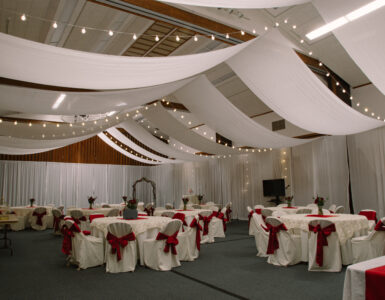Want to know the secret to flawless fudge or silky, smooth caramels? Home
Economist, Teresa Hunsaker , answers top candy making questions.
At some point in our baking and cooking career most of us desire to attempt
candy making…especially as the holidays get underway.
Here are some common questions and answers that may be a help to you in
this process…
Question #1:
Do I have to have a candy thermometer to successfully make candy?
Answer:
Yes, if you want to get the best results and if you haven’t had a lot of
experience with candy making and the cold water method of testing the
“stage” of your candy.
Here is the cold water method description:
During the cooking stage, drop a small amount of your sugar syrup into a
bowl of very cold water. (I actually place an ice cube or two in by bowl of
water.) Then using the description in the chart below to help you gauge the
temperature/doneness of your candy… By examining the shape and texture
of the resulting candy blob, you can determine the approximate temperature
of your sugar. This method takes a little practice, and is not as exact as a
candy thermometer, but it will do in a pinch!
Question #2:
I know that I have to make altitude adjustments for some of my other baking,
do I have to make altitude adjustments when making candies?
Answer:
Yes, absolutely, and here is how…it is a simple “subtraction” problem. Let’s
say you are making caramels, and the recipe says to bring the candy to 245°-
250°F or Firm Ball stage. At high altitudes, like most of Utah, we need to
adjust our recipe a few degrees by boiling water and taking the temperature
of our boiled water…let’s say it reads 204°F. That is 8 degrees less than the
normal boiling point of water at sea level…water boils at 212°F at sea level.
So, you will subtract 8 degrees from your candy recipe…245° – 8 = 237°F.
Without an altitude adjustment you will be over cooking your candies.
Or, you can decrease the cooking temperature in the
recipe by 2° for each
1,000 feet of elevation. For example then, those at around 4500 ft. above sea
level (much of the Wasatch front) that would be 8-9 degrees subtracted from
your recipe. The candies concentrate much faster at higher altitudes,
therefore lower temperatures and shorter cooking times are required.
Question #3:
What did I do wrong when I was melting my chocolate for dipping it changed
texture to a really dry grainy blob and it never went smooth and creamy?
Answer:
When chocolate is melted slowly and properly it is smooth, satiny, and
homogeneous (not separated). It is so creamy and luxurious you can hardly
keep from eating it right then. But, if when melting it you get even one drop
of moisture in it from an outside source…it will “seize”…it will go very dry
and grainy and be in blobs, just like described above. Seized chocolate
cannot be fixed…that doesn’t mean it can’t find a home in some other baked
product, but you will not ever be able to “dip” with that seized chocolate.
I had a lady call just the other day who had added liquid food coloring to her
white chocolate because she wanted to change the color to a nice pink…just
one drop of the food coloring “seized” her white chocolate…so it doesn’t just
have to be water that seizes your melting chocolate.
Question #4:
How do you fix fudge that is too sugary and grainy, or can you?
Answer:
You can fix fudge that has turned to sugar or has gone too grainy. You will
need to place the fudge back in a heavy saucepan and add about ½ cup of
cream, half and half, or evaporated milk. Slowly heat the mixture back up to
temperature, stirring at first to make sure the pieces of fudge all dissolve.
Re-beat when the re-cooked mixture cools to 110°F.
Question #5:
What do I need to do to keep my butter from separating out when making
toffee?
Answer:
There may be a couple of reasons why your butter is not staying “in solution”
when making toffee. One, you are not stirring it the entire time you are
cooking it. It does not have to be a fast stir, but the solution does need to
gently stay in motion the entire time. Patience is the key with toffee.
Second, the type and quality of butter can make a difference…use a good
quality salted butter. If you are still having trouble, go to a health food store
and buy a bottle of liquid lecithin. Add only a drop or two of the lecithin to
the cooking mixture. Lecithin is an emulsifier and will help the problem.
Lastly, be sure to use only a moderate heat, rather than high heat to cook
toffee…like I said, patience is the key. Some people get impatient with the
toffee process and try to speed it up by turning the heat up to high to get it
to temperature faster…not a good idea.
Additional Tips and Hints:
· Make candy on clear dry days, weather does make a difference in candy
making. On rainy or humid days, the cooking time can increase substantially
or your candy may never set up at all. Sugar attracts water, so the humidity
can adversely affect your recipe.
· Make sure your candy thermometer is accurate.
· Don’t scrap down the sides or bottom of cooking pans when pouring
candy out.
· Measure your ingredients accurately.
· Use the right pan. Use a heavy saucepan with thick sides and a thick
bottom so that it will conduct heat evenly. Candy mixtures usually triple in
volume as they cook, so you’ll need a pan that is large enough for the
mixture to boil freely without boiling over.
· Use a wooden spoon, they don’t absorb heat like the metal spoons.
· Make sure your spoon is clean and free from any uncooked sugar crystals
before using it to stir and pour the completed candy mixture.
· Wash down the sides of the saucepan to keep sugar crystals from
forming…especially important in fudge and toffee. I do this by dipping my
pastry brush in water and pas it around the sides of the pan just about the
candy mixture…any dripping water into the solution is not harmful to your
batch of candy.
· Make sure you heat and melt your solutions slowly at first, to help keep
the sugar crystals from splashing up on to the sides of the pan in the
beginning. Once the mixture is melted, dissolved, and in solution you can
turn the heat up to finish the cooking. Some people place a lid on the pan
and allow the steam formation to wash down the sides…this works too.
· Even clean your candy thermometer if you are taking it in and out of your
cooking solution. Be sure it is dry before placing in back in the boiling pot.
Water left on it may cause it to crack when it hits the high heat.
If you have any questions, contact Teresa Hunsaker at the Family and
Consumer Science Education Department at the Weber County USU Extension
office at (801) 399-8203 or online at www.extension.usu.edu/weber















Add comment